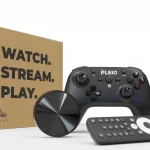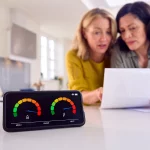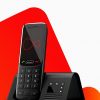Status of UK Mobile Signal Boosters from O2, Three, Vodafone and EE

The spread of Wi-Fi Calling across the UK’s major operators, which uses your home or other WiFi (broadband) service to run mobile calls and text (SMS) messages, has resulted in the gradual phasing-out of indoor femtocell signal boosters. But some people still want these, so we set out to find which operators will support them.
Until recently all of the major UK mobile operators offered Mobile Signal Booster devices – Three UK (Home Signal), EE (Signal Box), O2 (BoostBox) and Vodafone (Sure Signal). Crucially, these aren’t the same as indoor signal repeaters that merely boost an existing signal, instead these devices were often sold to consumers in areas (e.g. rural locations) where no 3G signal existed at all, or where the signal was too weak to be reliable.
The idea is simple enough. The device is plugged into a fixed line broadband ISP network, which enables it to harness your home or office internet connection in order to create its own indoor 3G mobile signal (microcell / femtocell) over a specific band (e.g. 2100MHz). A minimum download speed of between 0.5Mbps to 1Mbps was often required for this to work, as well as about half that in upload performance.
Advertisement
However, the advent of WiFi Calling (VoWiFi), which enables consumers with supporting Smartphones to harness a nearby wireless network in order to make mobile voice calls or send text messages, has gradually been reducing the need for such boosters. As has the ever-expanding coverage of 4G services, not least through the new Shared Rural Network (SRN) project (latest progress).
In response, many mobile operators have been gradually withdrawing their signal boosting devices from sale and Vodafone aim to completely shut the service down in September 2021 (here).
The Future
The biggest problem with WiFi Calling, perhaps not unlike the signal boosting solutions before it, is that it’s not yet a perfect service. Support for WiFi Calling remains a bit of a mixed bag and is partly dependent upon the capability of your Smartphone (note: many people still use basic mobiles). Likewise, some operators support voice calls but struggle with texts, while in other cases you won’t be able to get either on certain plans.
Equally, WiFi Calling may struggle to work if the wireless signal is weak or congested with a lot of users. On top of that, the feature is mainly designed to kick in around areas of weak mobile signal, but some have found issues with call stability when moving between rooms in areas where the difference between WiFi and Mobile signal strength can be highly variable (i.e. the transition should be seamless, but that’s not always the case).
Advertisement
Suffice to say that some consumers have opted to continue using Femtocell Mobile Signal Boosters instead, but many are concerned about the future of these devices. In response, we’ve attempted to find out the current state of play as best we can from each operator.
Vodafone (Sure Signal)
As above, Vodafone stopped selling their Sure Signal (v3) devices last April 2020 and they aim to completely withdraw the service by September 2021.
Three UK (Home Signal)
Three also stopped selling their Home Signal devices last year, although they are currently still supporting existing users. We did ask Three what their plans were for future support or retirement, and they promised us a response, but after several days of waiting – and two nudges to respond – no reply came.
EE (Signal Box)
We know from past comments that EE have officially “phased signal boxes out in favour of WiFi calling.” At the time of writing, we are aware of several people with working units, although EE remain vague about how long their support for existing customers will last. A spokesperson told ISPreview.co.uk: “EE customers can now keep connected in even more places with WiFi Calling, offering a superior experience and so the EE Signal Box is no longer available to buy from our website. We continue to support existing EE Signal Box customers and our contact centre colleagues are always on hand to answer any questions customers may have.”
O2 (BoostBox)
At present, O2 (VMO2) are the only mobile operator still able to supply their BoostBox to new customers (here), albeit only business customers. A spokesperson for the operator told ISPreview.co.uk: “The service is still available for customers to buy, and any existing or new O2 Business or Enterprise Customer can order a Boostbox. The service for consumers is still WiFi calling. We have no plans to withdraw the service at this time.”
Like it or not, these devices are a relic of the past, and those that still exist probably won’t be around for much longer. The fact that most of them are based off 3G bands and technology is another inevitable nail in the coffin, since most operators are currently preparing to sunset related bands in favour of 4G and 5G services in the near future. The exception would be O2’s BoostBox, which works with both 4G and 3G.
Mark is a professional technology writer, IT consultant and computer engineer from Dorset (England), he also founded ISPreview in 1999 and enjoys analysing the latest telecoms and broadband developments. Find me on X (Twitter), Mastodon, Facebook, BlueSky, Threads.net and Linkedin.
« EE and BT Celebrate England’s Euro 2020 Final with FREE Data
Do UK Broadband ISPs Need a New Approach to Price Hikes »























































Generally found WiFi calling to be unreliable so I leave it off to be used only as a last resort.
Works well enough for me. The handover between mobile network and VoWiFi, though, never seems to work properly, which is a bit of a pain…
Works good for me as well on EE. I’ve tested handover to a weak 4G signal at my home by being on a call and turning off Wi-Fi, and the call continues without interruption on 4G, then turn Wi-Fi back on and a few seconds later it is showing it is a Wi-Fi call again.
The issue of course with handover is that the phone needs to already have a stable 4G signal with a data connection whilst on a Wi-Fi call so it is ready to failover to it, but the reason it is a Wi-Fi call in the first place is because of patchy mobile reception. So if for example you have next to no 4G inside the house but okay outside, if you leave the house too quickly whilst on a Wi-Fi call then the Wi-Fi has dropped before the phone has been able to get on the 4G network, the same with moving from outside to inside, you can lose 4G before the phone has realised it has a Wi-Fi connection to connect to.
Fallback to 3G/2G for Wi-Fi calling isn’t supported, the call will always drop.
I’ve found that Vodafone’s threshold for handover is, in my experience, not great. Their network will aggressively try and move me back to an unsuitably weak 4g signal, but then move back to wifi.
I wouldn’t mind if this was seamless, but there’s a dropout of about a second as it moves from VoLTE to VoWifi.
When I was on EE, I had a setting in my phone’s menu, to choose whether to prefer 4G or Wifi in order to cure precisely this, with Vodafone they’ve disabled that setting.
So now I have to either leave the phone somewhere in my place where the 4G signal is too weak (and then wear bluetooth headphones), or make sure to be on flight mode but with the wifi enabled. It’s a faff.
Wish I’d cancelled in the first 14 days.
@blueacid – I enable aeroplane mode when I’m at home, but turn in Bluetooth and WiFi so that it forces the phone to use WiFi calling. I treat aeroplane mode as ‘at home mode’.
WiFi calling has definitely improved over the past few years. Orange was the first network to supply this service on Blackberry devices then it moved to selected HTC devices called signal boost. Its good to see most networks are supporting this and a lot of devices mainly android give you the option if you want to use use WiFi calling all the time or prefer using the network. The only downside is for the customer who doesn’t have WiFi and poor signal then its a difficult situation.
“Likewise, some operators support voice calls but struggle with texts” – should actually read, “likewise, O2 supports voice calls but struggles with texts”
Some operators (afaik Three and Vodafone) will only allow WiFi calling on Android phones bought directly from them. If you bought a sim-free android phone the WiFi calling and VoLTE may not work. Hence the femtocell remains useful in those cases. Unless all operators switch on WiFi calling on all devices, this seems like their tactic to force customers to buy phones from them which isn’t always the best deal.
Interesting, I’ve got a android phone from three, and Wi-fi calling pops up on it and then vanishes numerous times a day at home, so much so I’d never know if its actually using it when i make a call at home or not.
Wrong.
Bought the S21 sim free and recently switched to VF. WiFi calling works for me.
I have Samsung and Xiaomi mobiles not purchased from Vodafone and they work perfectly on VoWiFi
I have a s10e on three,and can confirm it has wifi calling. Phone was not bought from three. It was unlocked from 02. As a side note,im on payg on three,and its the only network to allow wifi calling on payg. All the others you need a contract for wifi calling
@Alan Jones
VoLTE and Wi-Fi Calling *are* available on Vodafone payg, Text CALLING to 97888 to activate WiFi calling and VoLTE. It’s also on Asda Mobile and is also being rolled out on EE following their recent annoucement.
Actually Three isn’t the only network to allow WiFi calling or 4G calling on PAYG as Three, Voxi running off the Vodafone network, EE all offer it and have done so for a while.
Indeed there was a article here announcing EE was pushing out WiFi calling and 4G calling to non Pay Monthly customers:
https://www.ispreview.co.uk/index.php/2021/06/ee-uk-extend-4g-and-wifi-calling-feature-to-more-customers.html
So please check your facts before assuming it’s true.
This is the case for me based on my devices, e.g. Nokia and Sony from 2018/2019. When I used the same devices with EE sim the WiFi calling is on – meaning the devices are not faulty and WiFi calling compatible. When I use my Three and VF contact sim on iPhone the WiFi calling is on – meaning WiFi calling is activated on both of my accounts. So in my experience it was like that, as in no WiFi calling on sim-free android. Perhaps I should’ve stated “some” sim-free android.
But it seems like the new models have been covered by Three and VF WiFi calling now.
Nonsense regarding Three. There is a whole list of phones and they don’t have to be bought from them…
Why is it acceptable for the mobile network telcos to show on their websites that signal strength is good or very good in your geographical area and entice you to contract service, when in reality no signal of any kind. When you complain the answer is always you can use your wifi. Surely this is obtaining money by false presences. It annoy be right. Ofcom need to kick some network backsides and insist they ALL provide-the mobile signal as advertised on the network maps, failing which they will be heavily penalised.
This is why you get 14 days to make sure the signal is acceptable with the option to cancel the contract without charge. What more do you expect? You should be able to tell on day 1 that the signal isn’t good enough and then move along to another operator who is.
Since when do mobile operators guarantee full/good signal in any location? Their coverage maps are just a GUIDE and you are free to leave them within 14 days of taking a new contract if not happy. Its not rocket science, it really isn’t…
They’ll just downgrade the network maps to the worst case scenario. They can’t survey everywhere. I speak as someone that has lived in an area that was listed as having good signal but was in a small depression in the ground surrounded by other properties so signal wasn’t great.
There were three properties in this situation. Can’t expect them to have coverage maps to that level of granularity and they’d have had to stick a mast on my roof to deliver the signal advertised.
I let the operator know, they adjusted their map to reflect the actual coverage. Seemed a more realistic solution than expecting them to build a mast for four properties, which would be refused planning permission most likely anyway, or conduct signal tests to virtually meter level resolution across the entire country.
If I’m considering changing networks then I buy a PAYG SIM and pop it in a spare phone and use that from time to time to make sure the signal etc is fine. Always seemed to be the logical way to check rather than having to return everything within the 14 day cooling off period.
Mike 80. Sorry,i should have said when i joined three in 2016 they were the only ones
WiFi calling doesn’t work too well when handing across multiple access points on things like corporate networks. As more homes use wi-fi boosters these will cause issues too. I’ve used booster boxes on VF and EE and they are far superior to WiFi calling. Clearly this is a move the suits the networks rather than the consumer.
I’ve experienced what you’re describing hopping between individual APs but not a wireless mesh.
Considering meshes are the current tech and best practice then it shouldn’t be an issue…
Well having got a O2 boost box I can say that it’s 3G only. No hint of 4G from it. It was only offers to me last year so it should be a up to date box.
Taller masts and mast sharing is the answer. With the rural shared agreement you should start to see an improvement but with many things in the UK it takes time! 4G took a good 4 years to fully take shape, 3G took roughly 6/7 years.
Personally I feel VoWiFi is okay in a situation like your at home or as small office but its no good if your out and about alot and end up somewhere with zero signal. Femtocell is old hat now.
Try living in a rural environment where 2 G is just about supported. Thanks to me EE box I get 2.5 G. My Android smartphone does have the VoverWiFi facility but it doesn’t function without my EE box.
Whilst banks and others still use SMS for 2FA we need femtocells for some of our customers because not all networks support SMS over WiFi.
Having to go outside and wander up a hill to get a code then be back down in the 60 seconds before it expires is frustrating. Changing network isn’t much of an option either because external coverage is “2g” which is fine when out and about and only available on that network.
I use WiFi calling on EE and it’s super reliable. I don’t have problems with switching between WiFi Calling and Mobile because I just have my phone in “airplane” mode at home with Wifi turned on. EE WifiCalling still works fine and it also means the battery life is noticeably better.
The usual caveat applies though – if your home wifi coverage is flaky you’ll get problems with Wifi Calling.
I have found WiFi calling with EE to be quite flaky when moving between rooms, especially in a 3 storey house. Funnily enough, the signal bars always show as none or one, but VoLTE seems far better than even a strong WiFi signal from a good router in my experience.
That’s because VoLTE is prioritised over 4G, whereas WiFi Calling has no priority unless you you segment it into a VLAN
I’ve been lucky enough to use a signal booster whilst in my old place, my mobile network said I could keep it but with fairly reliable 4G and full signal 3G I don’t even have a need for it anymore.
Considering putting it in my mates house where I don’t get signal but I think they’ve put 5G in his area now.
…..maybe if they de-authorised the boxes, they could give them to more people who need them.
Sorry, but the Android WiFi Calling (WFC) support on Vodafone is just laughably bad, only made worse by the complete, breathtaking incompetence / poor training of their support agents. It seems that the majority of modern Android phones can be enabled to support WFC but the configuration options when on VF may be invisible / disabled until VF send out a Config Service SMS to the handset. Finding the seemingly 1 in 1000 support agent who both understands this and can make it happen is near impossible. It’s quite likely that the config will then vanish at random, requiring another round of support calls. And that while WiFi Calling might be supported for the handset, SMS over WiFi may well not be, leaving it useless for Bank etc. 2FA. Friends with an identical handset (with the same generic firmware – eg not an operator build) on EE have no such issues, so when VF finally pull the plug on my SureSignal, activated roughly once per month when their poxy local mast goes down yet again, I will have to switch to EE despite their higher tariffs.